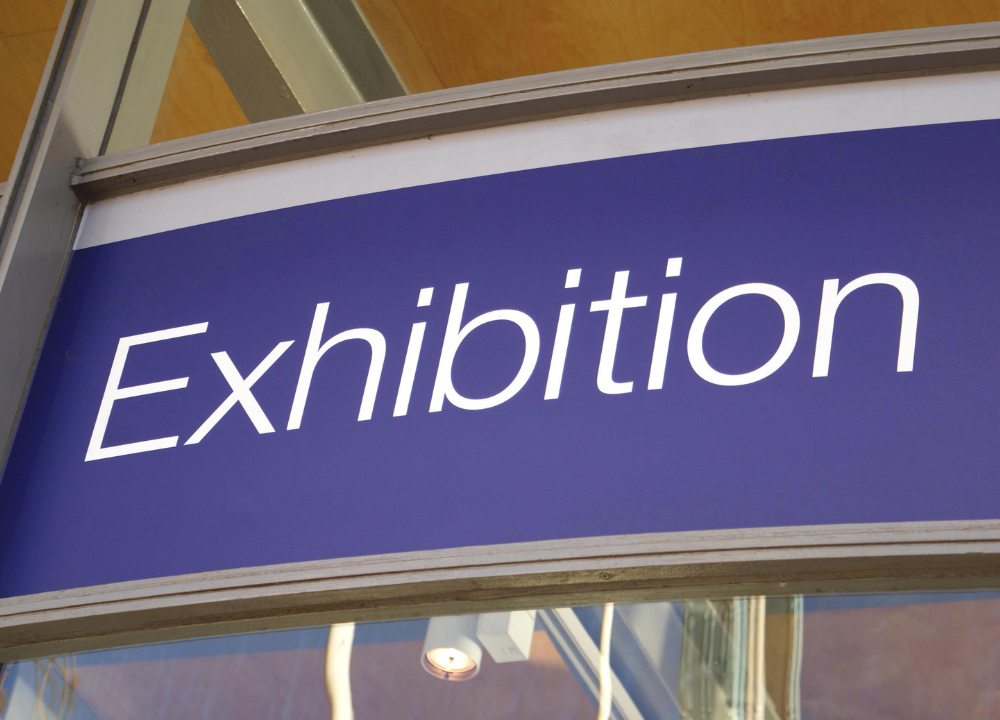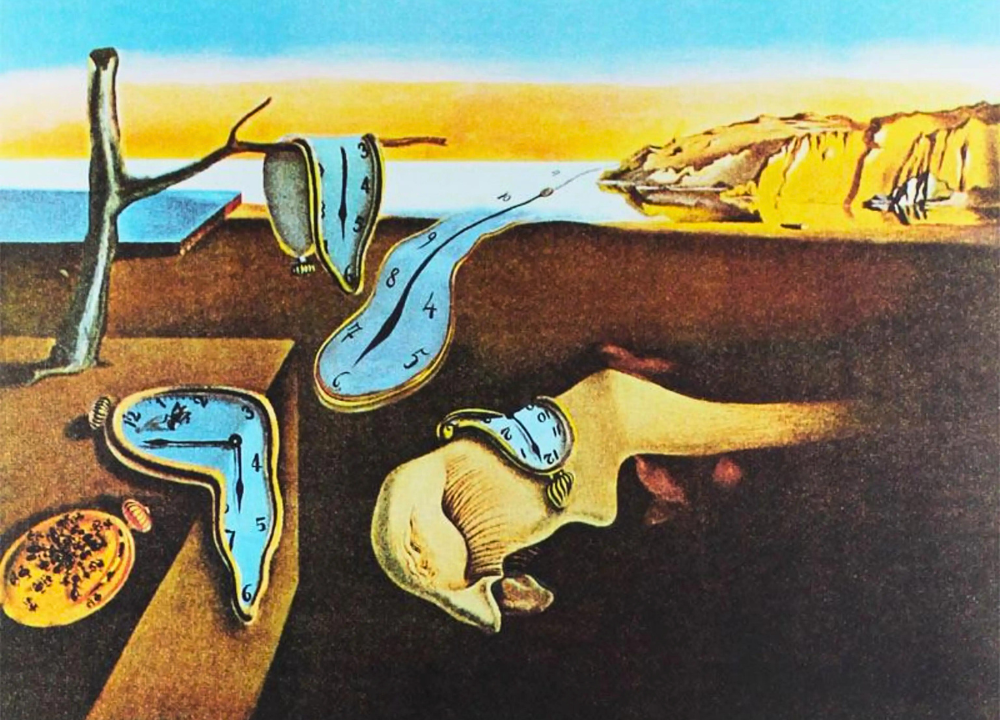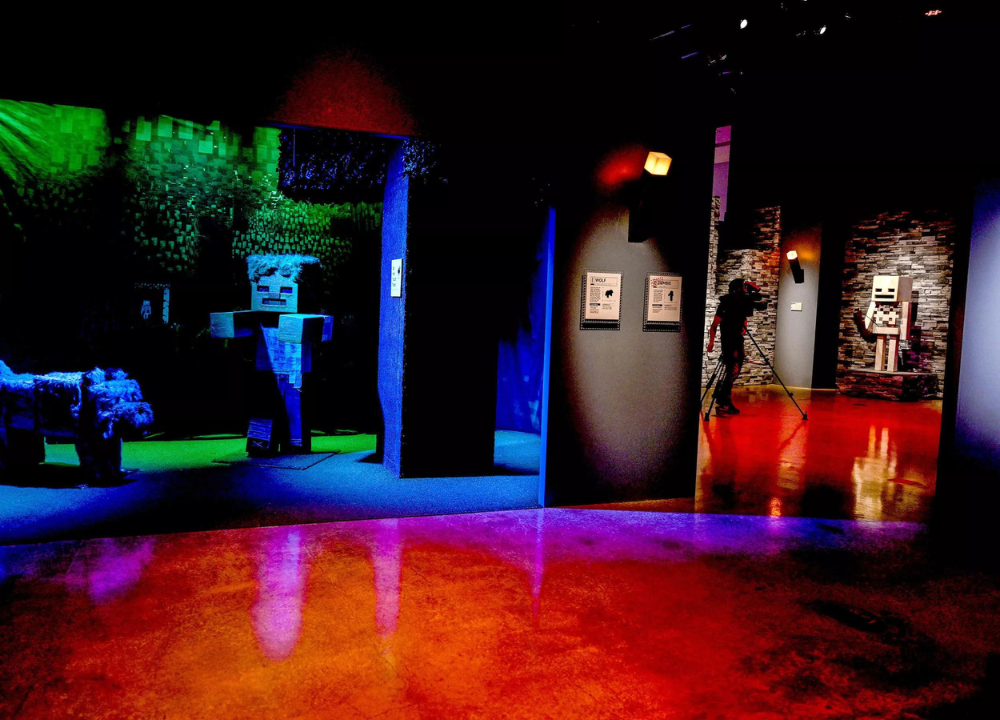Immersive art transforms traditional exhibitions into 3D experiences. It allows viewers to engage deeply with masterpieces.
Immersive art exhibitions revolutionize the way audiences experience art. These 3D exhibitions transport visitors into the heart of masterpieces, offering an interactive and engaging journey. By integrating cutting-edge technology, these exhibitions bring art to life, making it accessible and captivating for all ages.
Viewers can walk through, touch, and even feel the essence of each artwork. This approach not only enhances appreciation but also creates a memorable experience. Immersive art bridges the gap between traditional and modern, inviting everyone to explore and connect with art in a whole new dimension.
The Rise Of Immersive Art
Immersive art is changing how we experience masterpieces. Traditional museums once showcased art in static displays. Now, immersive 3D exhibitions bring these works to life. The rise of immersive art is transforming our interaction with art, making it more engaging and memorable.
The Evolution Of Art Exhibitions
Art exhibitions have evolved significantly over the years. Traditional galleries displayed paintings on walls and sculptures on pedestals. Visitors walked through silent halls, admiring art from a distance. This method often felt detached and impersonal.
Today’s exhibitions are much more dynamic. Technology has revolutionized how we see art. Digital projectors, virtual reality, and augmented reality create interactive experiences. These tools allow visitors to step inside a painting or sculpture, feeling as if they are part of the artwork.
- Early Exhibitions: Static displays, quiet halls, limited interaction.
- Modern Exhibitions: Interactive, technology-driven, engaging.
Immersive art showcases masterpieces in new ways. Visitors can walk through Van Gogh’s Starry Night or stand amidst Monet’s Water Lilies. They can even touch and feel textures through haptic feedback. This evolution has made art more accessible and enjoyable for all ages.
| Traditional Exhibitions | Immersive Exhibitions |
|---|---|
| Static displays | Interactive experiences |
| Limited engagement | High engagement |
| View from a distance | Step inside the art |
The Power Of Immersion
Immersive art has the power to transform how we connect with masterpieces. Experiencing art in 3D makes it more memorable. Visitors don’t just see the art; they feel it. This deep connection can evoke stronger emotions and a greater appreciation for the artist’s work.
Immersion also makes art more inclusive. People of all ages and backgrounds can enjoy immersive exhibitions. Children find them exciting and engaging. Adults appreciate the deeper understanding they gain from being part of the art. Even those with limited knowledge of art can enjoy and learn from these experiences.
- Engagement: Visitors interact with art, making it more memorable.
- Inclusivity: All ages and backgrounds can enjoy immersive art.
- Emotional Connection: Deepens the appreciation for the artist’s work.
Immersive art exhibitions can also boost local tourism. Cities hosting these exhibitions see a rise in visitors. People travel from afar to experience the magic of immersive art. This influx of tourists benefits local businesses, creating a vibrant cultural hub.
In summary, the power of immersion lies in its ability to make art accessible, engaging, and unforgettable. Immersive art is not just a trend; it is the future of how we experience masterpieces.
Exploring The World Of 3d Exhibitions
Imagine standing in front of a famous painting and suddenly finding yourself inside it. Exploring the World of 3D Exhibitions offers a unique blend of technology and art, making you feel like part of the masterpiece. These exhibitions use advanced tech to create a world where you can walk through art, not just look at it.
Technology And Art Collide
Modern technology is changing how we experience art. 3D exhibitions use tools like virtual reality (VR) and augmented reality (AR) to bring masterpieces to life. These tools let you see and feel art in ways never possible before.
Here are some technologies used in 3D exhibitions:
- VR Headsets: Immerse yourself in a painting.
- AR Apps: See art come alive on your device.
- Interactive Screens: Touch and interact with art.
The collision of art and technology has made art more accessible. You no longer need to travel to a museum to see famous works. You can explore them from your home. This fusion also allows artists to create new forms of art, blending traditional techniques with digital innovation.
Below is a table showing the impact of technology on art:
| Technology | Impact on Art |
|---|---|
| VR Headsets | Creates a fully immersive experience. |
| AR Apps | Brings static art to life. |
| Interactive Screens | Allows for tactile interaction with art. |
Creating An Immersive Experience
Creating an immersive experience goes beyond just viewing art. It makes you feel like you are a part of it. This is achieved through a combination of visuals, sounds, and sometimes even scents.
Here are some key elements that create an immersive experience:
- Visuals: High-quality projections and holograms make the art look real.
- Sounds: Background music and effects enhance the atmosphere.
- Scents: Sometimes, scents are used to match the scene.
Imagine standing in a Van Gogh painting. The stars in “Starry Night” twinkle above you. You hear the soft rustle of the wind and smell the fresh night air. This multi-sensory approach makes the art come alive, offering a deeper connection.
Interactive elements also play a crucial role. Touch screens let you explore details of the artwork. Motion sensors track your movements, changing the scene as you walk. These features create a dynamic environment, making each visit unique.
3D exhibitions are not just about seeing art; they are about experiencing it. They offer a new way to appreciate and interact with masterpieces, making art more engaging and accessible to everyone.

Masterpieces In A New Light
In this new era, we witness Masterpieces in a New Light as digital technology reshapes how we perceive and interact with art. This transformation allows us to engage with art in ways never before possible, making it more accessible and engaging for everyone.
Bringing Art To Life
Imagine stepping into a painting and wandering through its vibrant colors and intricate details. 3D exhibitions enable visitors to do just that. These immersive experiences use cutting-edge technology to create interactive environments. Here’s how it works:
- Projection Mapping: This technique uses light to project images onto surfaces, creating a stunning visual display.
- Virtual Reality (VR): Visitors can wear VR headsets to explore a 360-degree view of the artwork.
- Augmented Reality (AR): AR adds digital elements to the real world, enhancing the viewing experience.
These technologies allow us to see every brushstroke and texture up close. It’s like having a private tour guided by the artist themselves. The immersive environment also helps in understanding the context and emotions behind the artwork. This new way of experiencing art is not just educational but also incredibly fun and engaging for all age groups.
Reviving Historical Artworks
Historical artworks often suffer from the effects of time, such as fading colors and damaged surfaces. Immersive art exhibitions breathe new life into these masterpieces. Here are a few ways this is achieved:
- Digital Restoration: Advanced software can restore the original colors and details of an artwork.
- 3D Scanning: This technology creates a precise digital model of the artwork, preserving it for future generations.
- Interactive Displays: Information about the artwork’s history and significance is presented in an engaging format.
Visitors can learn about the artist’s life, the historical context, and the techniques used. These exhibitions often include educational elements, such as quizzes and interactive timelines. This makes learning about art history enjoyable and memorable. Bringing historical artworks into the digital age ensures they remain accessible and appreciated by future generations.
Enhancing The Visitor Experience
Enhancing the visitor experience is crucial to making these exhibitions unforgettable. Through interactivity and engagement, along with multi-sensory experiences, visitors can connect deeply with art in a way that traditional galleries cannot offer.
Interactivity And Engagement
Interactivity plays a vital role in immersive art exhibitions. Visitors can engage directly with the artwork, making the experience more personal and memorable. Here are a few ways interactivity enhances the visitor experience:
- Interactive Displays: Touchscreens and motion sensors allow visitors to manipulate and explore the art.
- Augmented Reality (AR): AR applications provide detailed insights and additional layers to the artwork.
- Virtual Reality (VR): VR headsets offer a 360-degree view, enabling visitors to step inside the art.
Interactive features bring art to life, transforming it from a static display to a dynamic experience. This approach not only captivates the audience but also educates them in a fun and engaging way.
| Feature | Benefit |
|---|---|
| Interactive Displays | Allows hands-on exploration |
| Augmented Reality | Provides additional insights |
| Virtual Reality | Offers an immersive 360-degree view |
Multi-sensory Experiences
Multi-sensory experiences are another key element in enhancing visitor engagement. These experiences stimulate multiple senses, creating a more immersive environment. Here are some examples:
- Soundscapes: Background music or sound effects complement the visual elements, adding depth to the experience.
- Smell: Fragrances can evoke specific emotions and memories, making the experience more vivid.
- Touch: Tactile elements allow visitors to feel textures and shapes, adding a physical dimension to the art.
By engaging multiple senses, immersive art exhibitions create a holistic experience that captivates the visitor completely. This approach ensures that the art leaves a lasting impression, making the visit truly unforgettable.
| Sense | Experience |
|---|---|
| Sound | Background music and effects |
| Smell | Fragrances to evoke emotions |
| Touch | Physical textures and shapes |
Breaking Barriers And Expanding Access
Immersive art is transforming the way people experience masterpieces. With 3D exhibitions, it breaks barriers and expands access to art. This revolutionary approach makes art more accessible and enjoyable for everyone, regardless of location or background.
Art For All
Immersive art ensures everyone can enjoy masterpieces. Traditional museums can be intimidating or hard to reach, but 3D exhibitions change that. They bring art directly to people, removing obstacles such as distance, cost, or physical limitations.
Here are some ways 3D exhibitions make art accessible:
- Virtual Tours: People can explore famous artworks from the comfort of their homes. No need for travel or tickets.
- Interactive Features: Viewers can zoom in, rotate, and interact with the art. This makes the experience engaging and educational.
- Educational Content: Exhibitions often include background information, artist biographies, and context. This helps viewers understand and appreciate the art.
These innovations ensure everyone, from students to seniors, can enjoy art. Accessibility is key in making art a universal experience. Here’s a table summarizing the benefits:
| Feature | Benefit |
|---|---|
| Virtual Tours | Access from anywhere |
| Interactive Features | Engaging experience |
| Educational Content | Deeper understanding |
Reaching A Global Audience
3D exhibitions have the power to reach a global audience. Traditional galleries are limited by geography, but virtual art knows no bounds. People from all over the world can view the same exhibition, creating a shared experience.
Here are some ways 3D exhibitions connect people globally:
- Online Platforms: Art can be displayed on websites, apps, and social media. This broadens the audience significantly.
- Language Options: Many exhibitions offer multiple languages. This ensures non-English speakers can enjoy and understand the art.
- Time Flexibility: People can visit exhibitions at any time. This removes the constraints of time zones and opening hours.
The reach of immersive art is unparalleled. It fosters a sense of global community and appreciation for art. This is a true game-changer in the art world. Here’s a table showing how it benefits a global audience:
| Method | Global Reach |
|---|---|
| Online Platforms | Broadens audience |
| Language Options | Inclusive experience |
| Time Flexibility | Convenient access |
Impacts And Future Possibilities
These innovative exhibitions are not just about viewing art; they are about feeling it, walking through it, and being a part of it. This section explores the impacts and future possibilities of this exciting trend.
Transforming The Art Industry
Immersive art is transforming the art industry in many ways. Traditional art galleries are evolving to incorporate digital elements, making art more accessible and engaging for everyone.
Here are some key transformations:
- Enhanced Visitor Experience: Interactive displays and virtual reality make art more engaging.
- Increased Accessibility: People from all over the world can experience exhibitions through VR.
- Educational Opportunities: Interactive elements can teach visitors about art history in a fun way.
Consider the following table highlighting some traditional vs. immersive art exhibition features:
| Traditional Exhibitions | Immersive Exhibitions |
|---|---|
| Static displays | Interactive and dynamic |
| Limited to physical space | Unlimited, virtual spaces |
| Passive viewing | Active participation |
This transformation is not just a trend; it is a shift towards a more inclusive and engaging art world. The future holds even more potential for these types of exhibitions to redefine how we interact with art.
Pushing The Boundaries Of Creativity
Immersive art is also pushing the boundaries of creativity. Artists are no longer confined to traditional mediums; they can now use technology to create multi-sensory experiences.
Key creative advancements include:
- 3D Projections: These allow artists to create lifelike, immersive environments.
- Augmented Reality (AR): AR adds a digital layer to the real world, enhancing the viewer’s experience.
- Virtual Reality (VR): VR transports viewers to entirely new worlds, making art more engaging.
For instance, Van Gogh’s paintings come to life through 3D projections, allowing viewers to walk through his world. This kind of innovation makes art more exciting and accessible, allowing artists to explore new creative possibilities.
Consider the following table showcasing traditional vs. modern creative tools:
| Traditional Tools | Modern Tools |
|---|---|
| Paint and canvas | 3D projection mapping |
| Sculpting materials | VR and AR technologies |
| Photography | 360-degree cameras |
This new wave of creativity is not just about using new tools. It is about changing how art is created and experienced. The future holds endless possibilities for artists and audiences alike.
Critiques And Controversies
These 3D exhibitions allow us to step inside famous artworks, offering a new perspective. Yet, this innovative approach has sparked debates. Critics question the balance between technology and artistic integrity. Here, we explore the critiques and controversies surrounding immersive art.
Authenticity And Reproductions
One major concern is the authenticity of these 3D exhibits. Traditional art lovers argue that reproductions lack the soul of the original. They believe the essence of a masterpiece can’t be captured in digital form.
- Original artworks have texture and depth that digital versions lack.
- Reproductions can sometimes misinterpret the artist’s intent.
- Visitors might miss out on the unique aura of the original piece.
Supporters, on the other hand, argue that these reproductions make art accessible to a broader audience. They believe that 3D exhibitions can spark interest in those who might not visit traditional galleries.
| Pros of 3D Reproductions | Cons of 3D Reproductions |
|---|---|
| Accessible to everyone | May lack original texture |
| Interactive experience | Possible misinterpretation of intent |
| Educational for all ages | Loss of unique aura |
Thus, the debate between authenticity and accessibility remains at the forefront of immersive art discussions.
Balancing Art And Technology
Another point of contention is the balance between art and technology. Purists worry that technology might overshadow the art itself. They fear that the focus shifts from the artwork to the technological tools used to display it.
Here are some concerns:
- Technology can distract from the original beauty of the art.
- High-tech displays might become the main attraction, rather than the art.
- Technical issues could disrupt the immersive experience.
Yet, others see technology as a way to enhance the artistic experience. They argue that digital tools can bring new life to old masterpieces. This can be especially impactful for younger generations.
Consider the following:
- Interactive elements can engage viewers in new ways.
- Augmented reality can add layers of meaning to the artwork.
- Virtual tours can make exhibitions accessible worldwide.
Finding the right balance is crucial. Immersive art should complement, not overshadow, the original masterpieces. Both art and technology need to work together to create a harmonious experience.
Frequently Asked Questions
Is Van Gogh’s Immersive Experience Worth It?
Yes, Van Gogh’s immersive experience is worth it. The vibrant visuals and engaging atmosphere bring his art to life. Perfect for art enthusiasts and families.
What Is An Immersive Art Exhibition?
An immersive art exhibition engages visitors through interactive, multi-sensory experiences. It often uses digital projections, sound, and physical installations.
What To Expect At Van Gogh’s Immersive Experience?
Experience Van Gogh’s art like never before. Walk through immersive, 360-degree digital projections. Enjoy vibrant colors, detailed brushstrokes, and captivating music. Feel the artist’s passion and creativity. Perfect for art lovers and families.
How Long Does The Monet Exhibit Take?
The Monet exhibit typically takes about 1 to 2 hours to fully experience. Time may vary based on crowd size.
Conclusion
Immersive art offers a captivating experience, bringing masterpieces to life in 3D. This journey through exhibitions is unforgettable. Dive into these interactive spaces and feel the art around you. Explore, engage, and let your senses guide you through a world of creativity.
Enjoy the magic of immersive art exhibitions.




